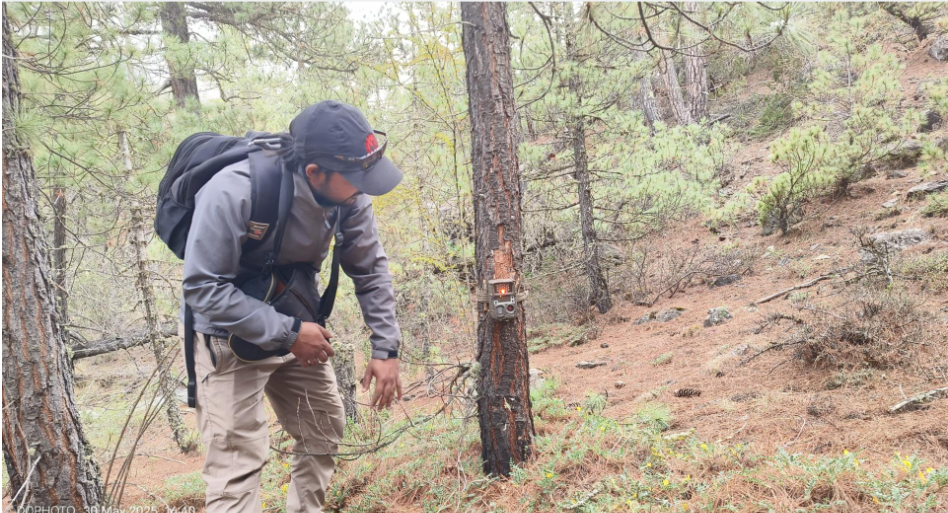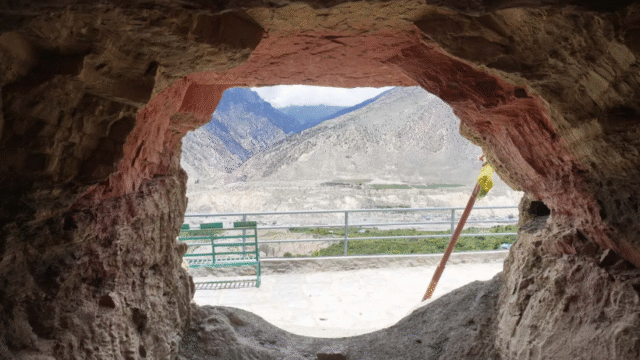A new initiative to study snow leopards and their prey species has officially begun in the Mustang district, focusing on the high-altitude habitats across three municipalities. The joint survey is being carried out by the National Nature Conservation Trust (NTNC) in collaboration with the Annapurna Conservation Area Project (ACAP) and its Area Conservation Office in Jomsom.
Snow Leopard and Prey Species
According to Rajesh Gupta, Head of ACAP’s Jomsom office, the survey aims to identify the presence, behavior, and overlapping activities of snow leopards and other species, particularly in the highland pastures, forests, and open lands of Thasang, Gharapjhong, and Baragung Muktikshetra. Camera trapping methods have been deployed as the primary survey technique.
A total of 32 motion-triggered cameras have been installed in key areas ranging from elevations of 3,000 to 4,600 meters above sea level. These cameras are strategically placed in regions considered suitable habitats for snow leopards and their prey species, such as blue sheep (bharal), Himalayan tahr, and other mountain ungulates.
“The cameras are equipped with audio-visual recording features, allowing us to capture high-quality evidence of wildlife movement in the region,” said Office Chief Rajesh Gupta. “This makes the survey more efficient and provides valuable data not only about the snow leopards but also about the biodiversity of this sensitive mountain ecosystem.”
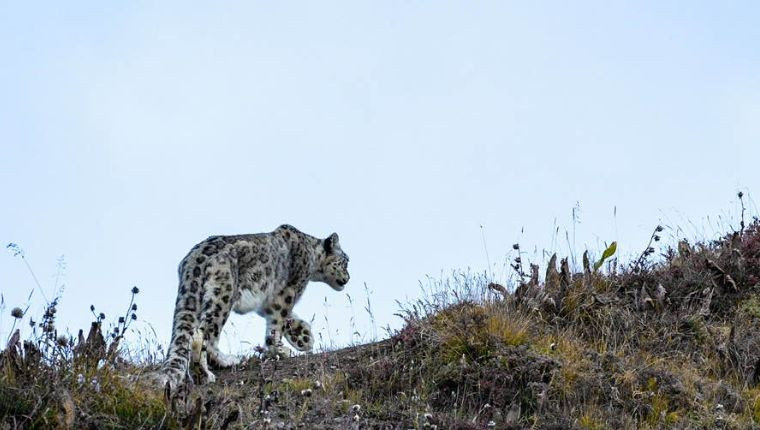
The camera traps have been installed along a broad stretch that includes the remote grasslands and ridgelines of Ghansa, Sangta, Muktinath, Jharkot, Lupra, Chhusang, Samar, Tetang, Jomsom Lekh, and Batase Lekh of Marpha. These locations are part of the snow leopard’s natural range and are known for seasonal migration of both predators and prey.
Deepak Oli, Forest Ranger at ACAP Jomsom, informed that the camera traps will remain in operation for 45 days. The cameras have been installed at an approximate distance of five kilometers from one another to maximize coverage and reduce overlap, he explained.
“This year, the survey goes beyond simply tracking snow leopards. We are also studying their prey species, and analyzing the overlap between the habitat of snow leopards and common leopards. This will help us understand how far down the snow leopards are descending, and to what altitude the common leopards are climbing,” said Oli.
He further added that the data obtained will help determine whether there is a shift or competition in habitat due to climate change, food scarcity, or human encroachment.
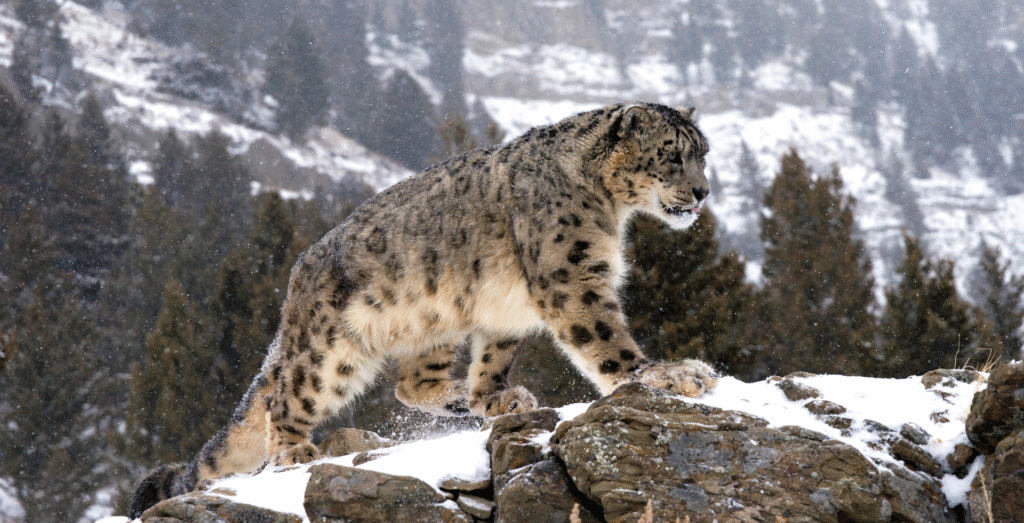
In addition to camera trapping, fecal samples (scat) of snow leopards will also be collected during the fieldwork. These samples will be sent to a laboratory for genetic analysis, which will help confirm the presence, population count, and possibly the migration patterns of individual snow leopards in the area.
Last year, ACAP had deployed dozens of cameras in Upper and Lower Mustang as part of a snow leopard monitoring program. However, only partial camera trapping was conducted in Lower Mustang. This year’s survey is designed to be more comprehensive, covering areas that were missed or inadequately monitored before.
Mustang, known for its rugged Himalayan terrain and alpine ecology, serves as one of Nepal’s prime snow leopard habitats. Despite their elusive nature, snow leopards play a critical role in the region’s mountain ecosystem as apex predators.
The camera traps are expected to help not only in biodiversity research but also in curbing illegal wildlife poaching, which often goes unnoticed in the vast and remote upper Mustang region. According to ACAP officials, the camera traps will also monitor human activities during the Yarsagumba (caterpillar fungus) collection season, a period when thousands of people enter highland pastures, increasing the risk of disturbances and illegal hunting.
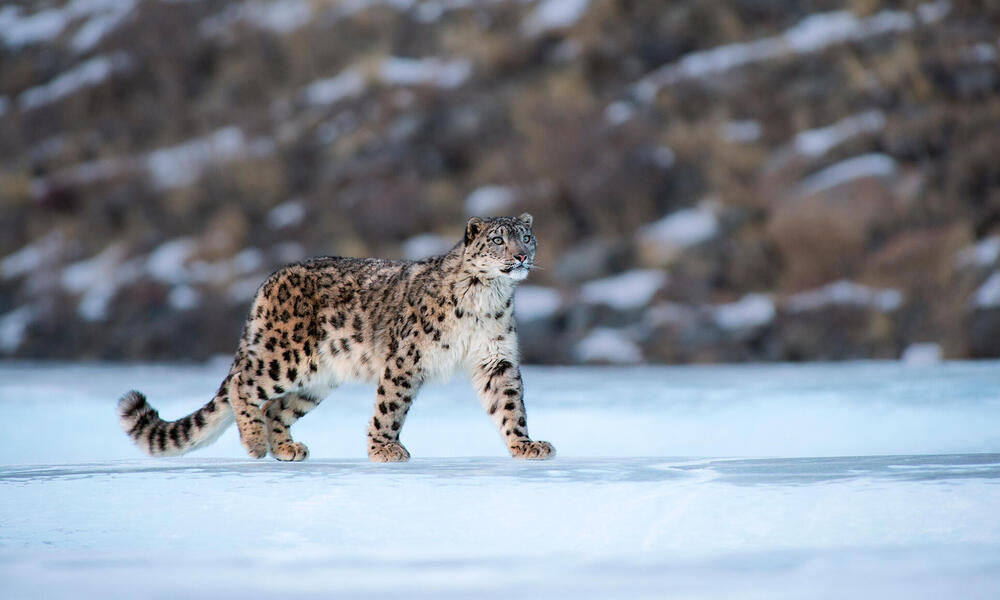
“Camera traps have proven effective in both wildlife monitoring and surveillance. With their support, we aim to mitigate illegal activities in snow leopard habitats during sensitive ecological seasons,” said Ranger Oli.
The ongoing snow leopard survey is being conducted by a dedicated team from ACAP Jomsom, including forest rangers and wildlife researchers. The team is committed to hiking through remote, rugged trails to install, maintain, and monitor the camera equipment.
Local communities and conservationists have welcomed the initiative, hoping it will contribute to better wildlife management, informed conservation policies, and eco-tourism promotion in Mustang. Snow leopards, often referred to as “ghosts of the mountains” due to their elusive behavior, are an iconic species that draw interest from researchers and tourists alike.
As the survey continues over the next month and a half, researchers expect to gather new insights into species interactions, ecological shifts, and the effectiveness of conservation interventions in Nepal’s high mountains. With this scientific effort, Mustang once again positions itself at the forefront of wildlife research and conservation efforts in the Himalayas.
